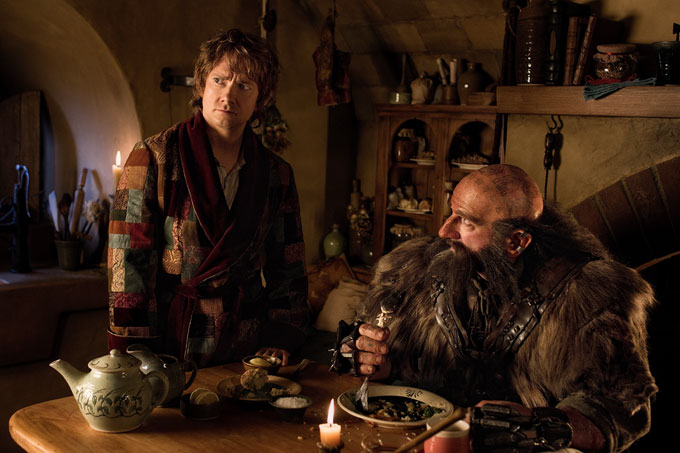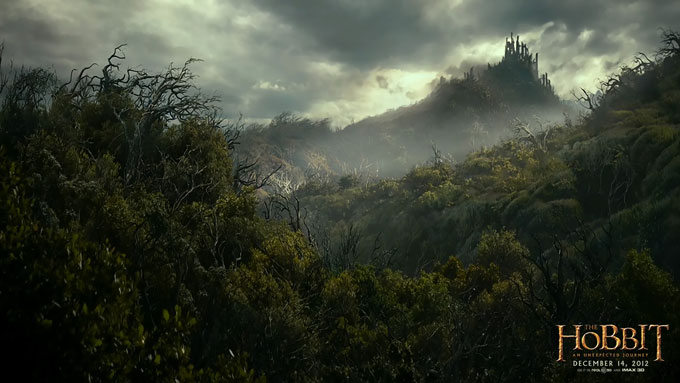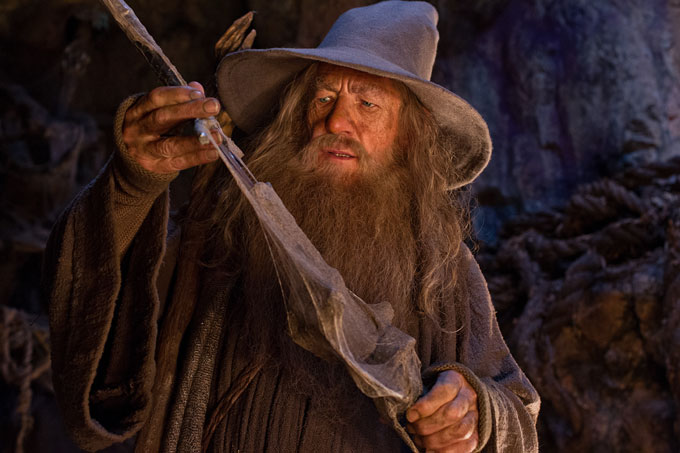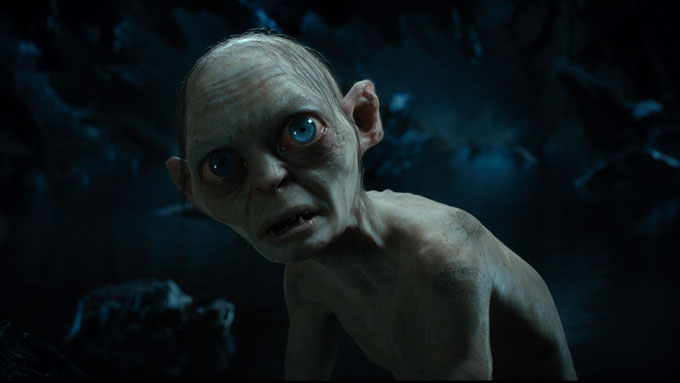The Hobbit is the first movie filmed in 48 frames per second compared to the traditional 24 frames per second. The format is dubbed HFR (high frame rate) and FlatpanelsHD shares our experience with The Hobbit in HFR - which is certainly different. If you have not seen the movie yet, do not hesitate to continue. Our article contains no spoilers (other than those seen from the trailer).
Note: You can only experience The Hobbit in HFR if you opt for 3D. Not all 3D showings are in HFR. The Hobbit is not available in HFR in 2D.
A short introduction to 24 fps
Before we jump in we think that a short introduction to 24 fps is necessary. Movies have been shot in 24 fps (frames per second or pictures per second) for decades and even though movie theatres and TVs increase the frame rate (typically by showing each picture between 2 to 6 times) there is only new picture information 24 times per second.

Our experience with the Hobbit in HFR 3D
The 24 fps format has no formal name but is often associated with something that is “cinematic” or “cinema-like”. This is how we have experienced movies during a life time and it just feels “right”. But it is important to emphasize that there is absolutely no truth in 24 fps as the ultimate movie format. It is an old format chosen based on economic, technical and distribution considerations in a time when everything was analog. 24fps was the lowest frame rate that was able to reproduce perfectly smooth motion. Today we praise the format as it is associated with the blurry cinematic look.
The counter-argument is that 24fps is a unique mode of expression - which is true
We have since moved to the digital age and movie studies are starting to follow. This will open new opportunities, including the option to shoot at higher frame rates. The Hobbit is the first theatrical movie that takes the step to 48fps and in the coming years we will see more from that front. James Cameron is even considering moving to 60fps for Avatar 2 and Avatar 3.
The counter-argument is that 24fps is a unique mode of expression, which is true. The entire movie industry has produced movies based on this premise, just like movies are produced in order to be reproduced on in a square format on a monitor or projector. In other words, film production has been optimized based on these “limitations”, and we have seen fantastic movies since. Some music lovers still prefer the crackling and “authentic” sound of the vinyl records and some music lovers prefer live performances. It is not different for movies. The 24fps is a framework that we have been optimizing for many, many years. This is purely a matter of taste and there is no final truth in this debate.
However, what is interesting is if 48fps can expand our definition, and allow creation of new movies based on the new film technique. We have been very curious about Peter Jackson’s adventure and the result. It is with this mental starting point we went inside the movie theatre to experience The Hobbit.
To learn more about the HFR format see our backgrounder on The Hobbit here.
The Hobbit in HFR - our experience
From the very beginning you will notice that The Hobbit is unlike other movies. Something different happens of the big screen that you are not used to. The resolution is identical to most other movies, the camera action is unchanged but it undoubtedly looks different. There is no doubt. The movie scenes have an unprecedented clarity that is markedly different from anything we have seen in the past.

Our experience with the Hobbit in HFR 3D
The first part of the movies takes place in Bilbo’s home where he is accompanied by the dwarves, as seen in the trailer. Personally, I was not sure what to think about the changes in the beginning. I went inside with an open mind but it was a bit tough to focus on the actual movie instead of the technical side because it was such as visible change. The dinner looked extremely authentic; almost too realistic. It can best be described as being present; as standing in the room and looking directly at the dwarves. The HFR format seems too reveal too much. The actors appeared too human and not as creates from an adventure story. Bad acting was exposed. The smallest details in faces were visible. And although I think acting was generally very solid it is evident that HFR introduced even more extreme demands for acting, scenery and make-up.
Peter Jackson says that it takes a relatively short time to get used to HFR, and depending on the definition of “short time” you can agree or disagree. Personally, I spent the first 45-60 minutes trying to absorb the changes. Maybe I just focused too much on the technical side of things but it is truly a different experience that you have to get used to.

Our experience with the Hobbit in HFR 3D
HFR brings an unprecedented level of detailing into images but also introduces new challenges to the movie director
After about an hour something happens. You get used to the experience and it is a small revelation. I could obviously see the benefits from the very beginning but I just felt that some close-up scenes looked too authentic.
Just like in the Lord of the Rings, The Hobbit has amazing scenery shots, and HFR brings an unprecedented level of detailing into images. During battle sequences you can actually follow the action and rapid movements are crystal clear. It not only contributes to detailing but also to a more magical movie experience. Some of the scenes are just fantastic and gives you the chills. Everything starts to look “cinematic” once again and maybe even more cinematic at times. Peter Jackson loves the nature shots and you will, too.
There will be relapses. Not everything changes from this point on. Sometimes during peaceful dialogue you will feel that it looks too authentic again but I think that it has something to do with 24fps being so engraved in our mental perception of movies. I think it will change over timer because even though it still felt very authentic later in the movie it did not feels as wrong as in the opening sequence with Bilbo and the dwarves.
However, the HFR format cannot take the honor alone, as 3D clearly plays an important role. For the first time I think that the 3D effect contributes without being annoying. HFR makes 3D relevant. The only 3D movie with real actors that worked, visually, was Avatar but it still felt unrealistic; as if the actors were glued to the canvas in “layers”.
When you forget that you are watching a 3D movie, 3D tech is mature
The Hobbit is very different. There is a smooth depth transition in the depth of field. The actors in the foreground do not appear as “layers”. At times, we forgot about both HFR and 3D, and just enjoyed the fantastic movie moments of The Hobbit.
And that precisely illustrates that it works, in my opinion. When you forget that you are watching a 3D movie, 3D technology is mature.

Our experience with the Hobbit in HFR 3D
HFR is here to stay
Towards the end of the movie I did not even think about HFR. I just enjoyed a movie that is great on many different levels. The technology dominated in the beginning but as time passes you forget about it and instead it helps to enhance storytelling and enhance the visual experience. It bodes well for HFR and I cannot wait to experience HFR in science fiction, animation and other genres. However, it is also 100 % clear that HFR introduces new challenges for movie directors, in regards to dialogue scenes, makeup, scenery etc. Peter Jackson has not mastered HFR in all scenes yet but when it works, it shows how huge potential it has in taking movie production to the new step.
HFR is here to stay. 3D is relevant again. I have watched my last 3D movie without HFR. You have to experience the HFR version of The Hobbit.
Bonus: The Hobbit in HFR does not look like the effect created by a 100/120 Hz TV. The interpolation systems on TVs tend to make video look unnatural with picture artefacts and video that seems to run too fast. The Hobbit looks different. It can look too realistic at rimes but never unnatural. We hope to see TV manufacturers abandon the 100/200 Hz systems after the introduction of HFR. The purpose of these systems have always been to improve motion detail but that is not necessary after the step to HFR.
Have you seen The Hobbit in 3D HFR (48fps)? What do you think of the new HFR format?